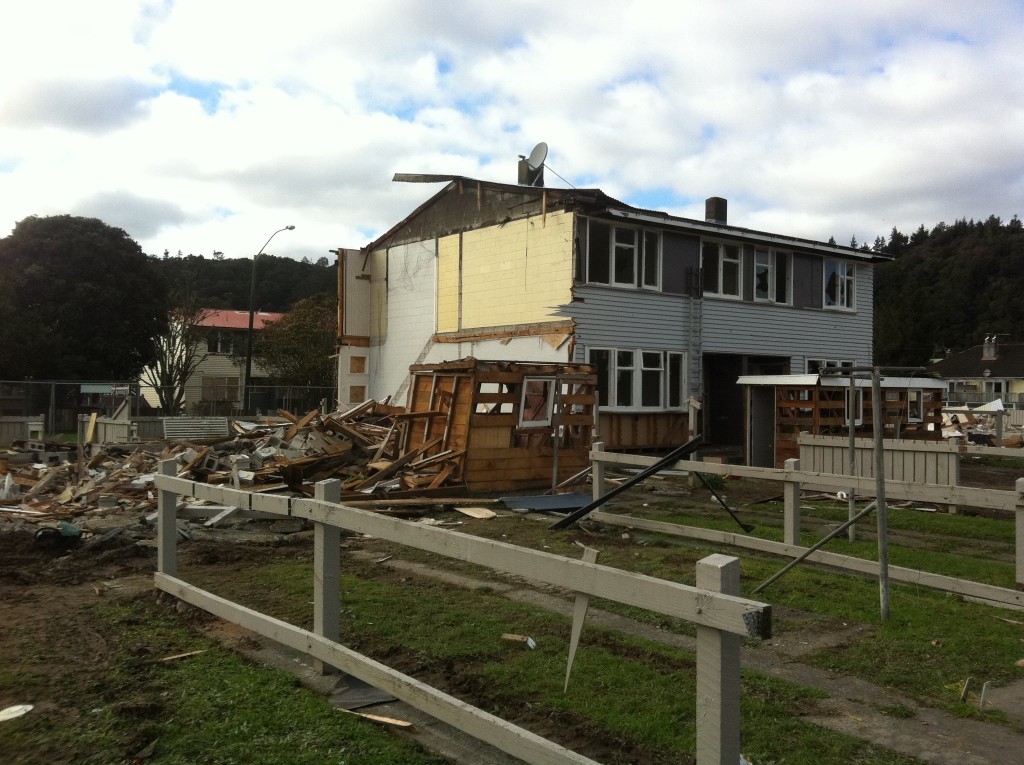![]() Mana News housing editor Tahu Wilson
Mana News housing editor Tahu Wilson
At the MANA Hui A Tau this past weekend we were asked a question during breakfast about Housing NZ and the sell-off of state houses – a major campaign for MANA at the moment. The question was, “I am the head of Housing NZ and you are in my office on a Friday afternoon. I tell you that 30 state houses are being bulldozed on Monday morning unless you purchase them at an agreed price, provided you take the houses somewhere else. What would your answer be?”
After briefly thinking that would be a great idea, that we could help our people find good affordable housing, I then realised how this would affect MANA campaigns elsewhere. To the effect that we would have moved from the stance of “No Sale of State Houses” and indeed, to build 10,000 new state houses every year until the housing crisis ends, to essentially being a landlord. From our people in MANA being bashed and arrested at forced evictions to stop the sale of all state houses, to… okay, sell us some. I was pretty adamant with my on-the-spot-choice to be staunch.
But now I’m looking back over the fence. Thinking over it the last few days I realise that it may be the best available way to help our people into affordable homes – if there is nothing we can do about the state house land sales and the bulldozers. There is no question that the people of MANA will continue to protest as long as long as the problem exists and we can take the beatings. But the decision has already been made by government; we know this. So this choice between bulldoze or buy becomes a little more hazy as it becomes one of two difficult choices, because there is no option given by this hypothetical head of Housing NZ, to choose to keep them as is, or to fix them up where they are.
So the choice is between: 1) no house for anyone on that property, with the houses being destroyed and the land being sold, or 2) housing other families elsewhere in those houses, after those houses have been brought at an agreed cost and transported to another poor region or area and renovated.
Which is the best option of the two?
Well we have to do the pros and cons thing. The immediate negatives for each are that: 1) will happen anyway (unless our protests, occupations, petitions, social media posts, and campaigns against the sale of state houses work, which is possible it has happened before); and 2) may have hidden continuous costs and charges involved, and have to deal with future policy changes that may harden the criteria and increase the costs of providing social housing, such as withdrawing housing supplements from beneficiaries, either of which combined with other social housing issues could lead to failure of those social housing providers as the social housing buck is passed to Māori.
Then there are the pros. Well there are no pros for 1) unless you’re a wealthy probably white rent farmer. The one positive is that MANA will remain staunch and push the SHAN campaign. Given no real choice, option 2) does have positives, and some even more positive possibilities. The Korowai Trust in Tai Tokerau shows promise although each house they got meant a family was evicted in Glen Innes. It was not the Trust that evicted those families. Those families were evicted by government. The Trust chose to help their people in need by saying yes to the offer from government, in its move toward the outsourcing of social housing. Communities can be built, houses taken to Papakainga around the motu to be lived in, and more sustainable housing can be built around them.
As long as the social housing entities set up mandated to help the people are not run by Māori with Pakeha corporate values, the possibilities of social tikanga-based communities built on re-modelled state houses exists. But if the effort is set up to fail, which is possible it has happened before, our housing problems will get worse.

